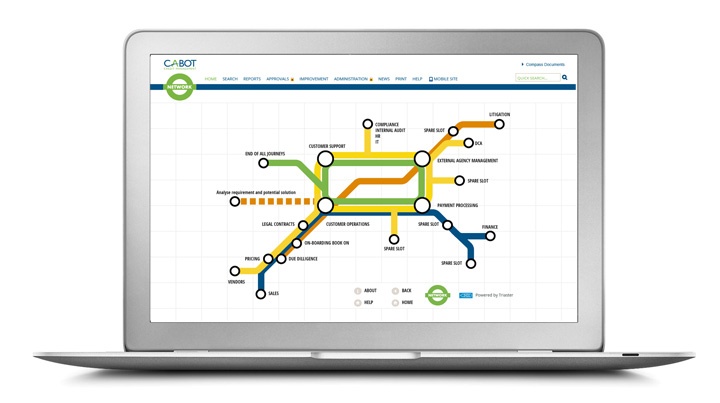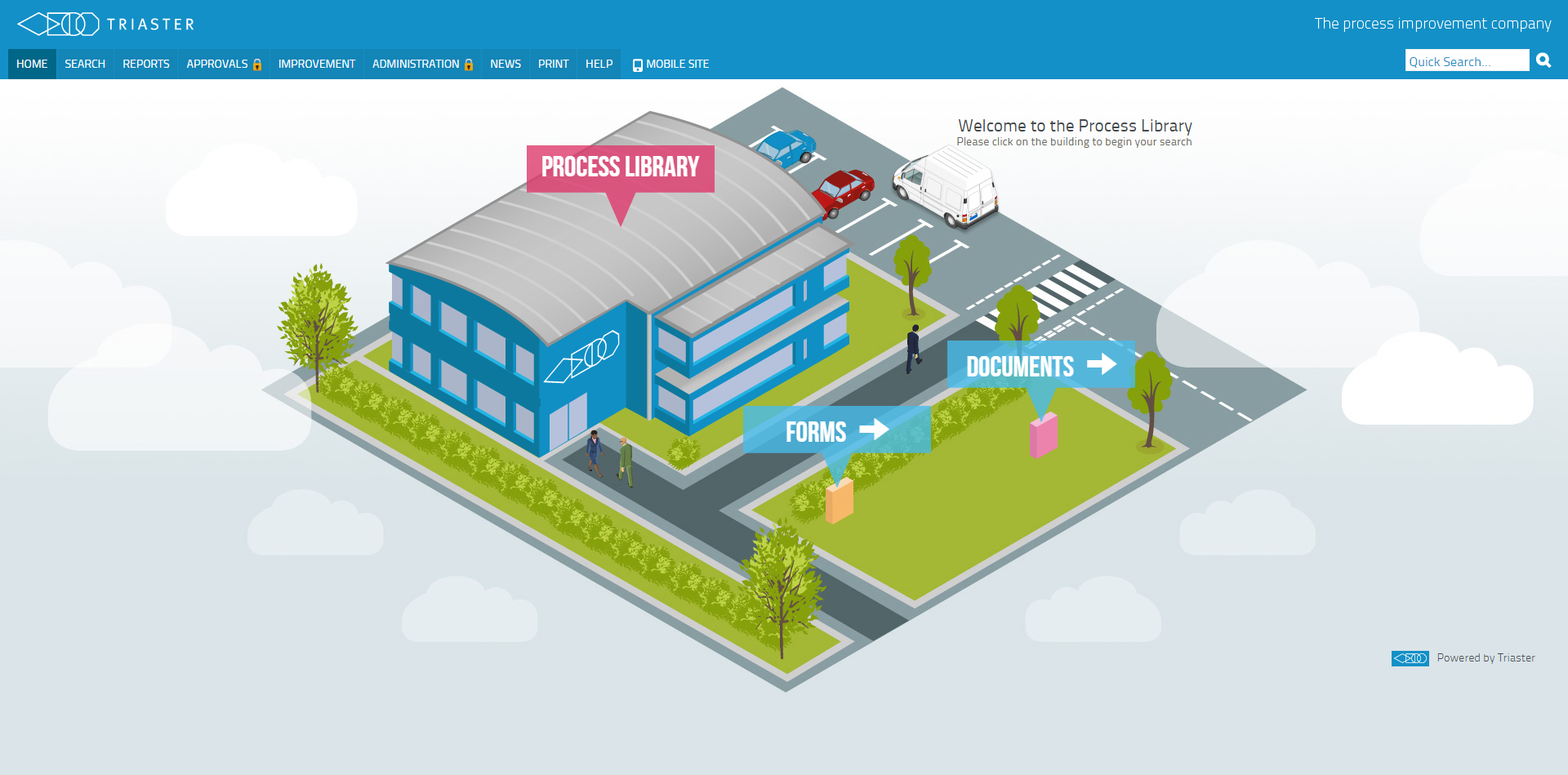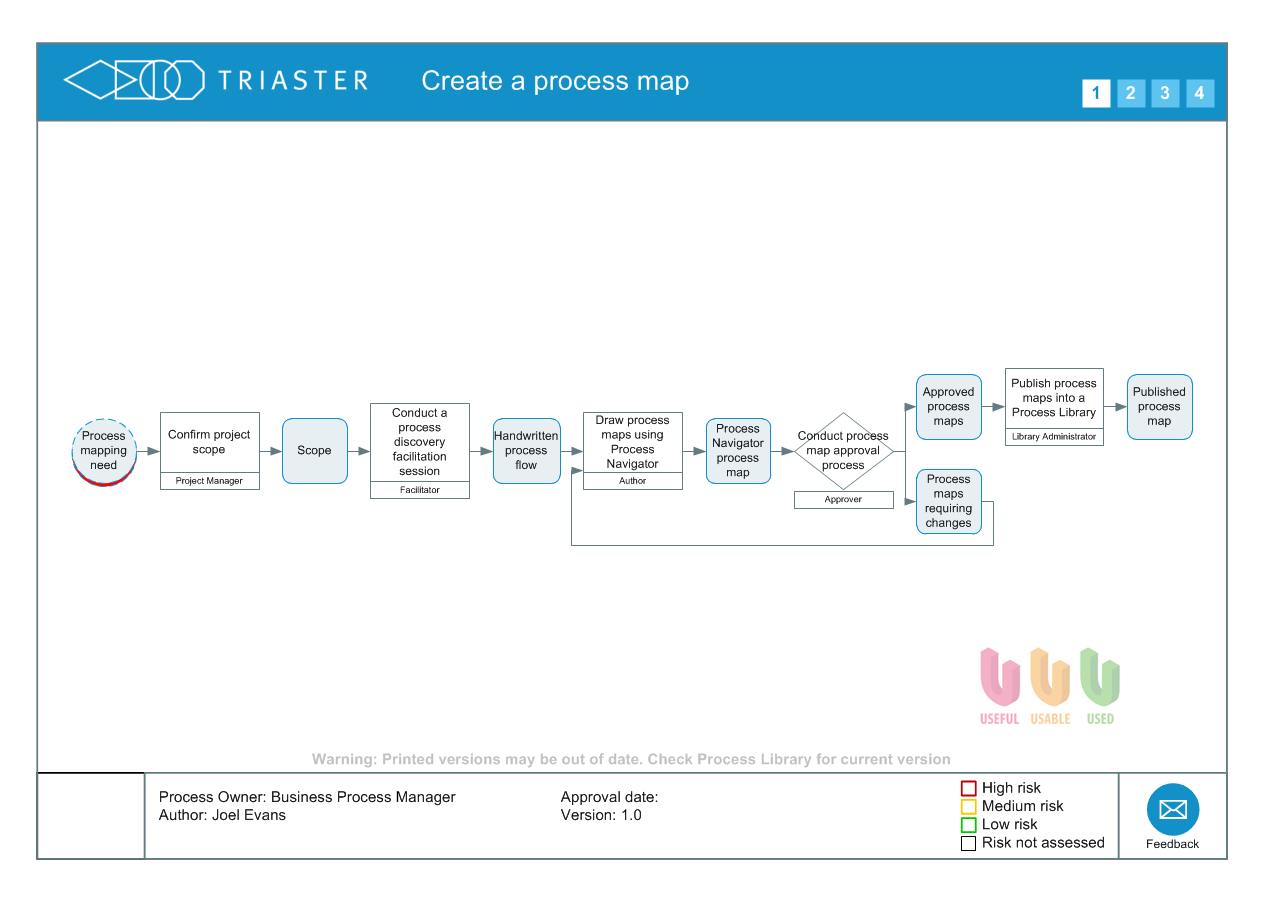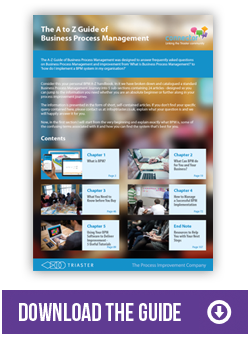Business Process Management can be defined as a method used to capture, manage and analyse an organisation's business processes in order to allow for a standardised way of working that can be organised and shared throughout an organisation.
There is also an improvement component, but this is sometimes viewed separately from BPM and offered as a separate service to customers due to the increased complexity of going from process management to process improvement.
What is Business Process Management and Improvement?
Management
A Business Process Management System, for instance, can be used to house an organisations important documents in the form of Process maps. These process maps can be viewed in a simple, visual way that allows employees to carry out the steps of a particular task more efficiently.
With a system that is shared throughout the company, housing process maps that have captured a task accurately, this then creates a standard way of working across the entire organisation.
Improvement
When it comes to Business Process Improvement, a process needs to be captured accurately and analysed using software tools to identify bottlenecks and improvement opportunities. This is known as Business Process Improvement and is associated closely with BPM.
The 'As Is' and 'To Be' are key parts of process management and improvement and should be understood before moving forward with any process improvement plan.
Some organisations that implement Business Process Management systems are not interested in process improvement, they are merely interested in a system that can house their documents and forms and a system which can make these documents accessible to all staff to create a standard way of working.
This type of Business process Management requires less input from an organisation than taking the next step to continuous improvement. While both require a culture change, the learning curve for managing processes and creating a standard way of working is less difficult then the cyclical, on-going effort required for continuous process improvement.

Why a Business Process Management System is Key for Process Improvement
There are various functions of a Business Process Management system that are crucial for business improvement such as:
- The ability to process map and assign value adding and non-value adding data to each process step
- The ability to search for which managers are responsible for a process, which employees are accountable for the process, and those that need to be consulted and informed on any process change - known as a RACI
- Assigning colours or numbers to represent the level of risk in each individual process step - known as a Risk Matrix.
- An information library that can organise process information immediately to show auditors compliance with quality certifications such as ISO.
- A data capture functionality within the process mapping tool where an organisation can input time, effort and cost data of process steps to analyse efficiency.
This is a very high level understanding of Business Process Management (the field) and Business Process Management (the tools). It is necessary to go beyond definitions to really understand what BPM involves and why it is necessary to improve business processes.
For this reason, I created a BPM Guide that explores every inch of Business Process Management from start to finish. It essentially covers the entire BPM journey from introduction to implementation and use. This guide covers:
- What BPM is
- What BPM Can do for a Business
- What You Need to Know Before You Buy Any Software System
- How to Manage a Successful Implementation
- Tutorials on How to Use a BPM Software System
BPM: Breaking It Down
BPM is first and foremost "a business practice, encompassing techniques and structured methods".
To take a BPM approach however, two key elements must be present:
- The ‘things that are done’ must deliver improvement to the business or organisation where they are being done.
- The approach considers the multiple inter-related processes of an organisation and as such takes a holistic look at its business activities. This is a key difference between BPM and other approaches where individual business functions are improved – by automation perhaps.
It is essential to examine each of these a bit more:
Delivering Improvement
Improvement must be the key objective and deliverable of any BPM project. Achieving improvement is the sole reason for undertaking Business Process Management project. However, that improvement can take many forms. For example:
- Improved access to information about how to do a process
- Consistent delivery of processes throughout the organisation
- Adherence to processes by those responsible for doing them
- More efficient processes (with duplicated or unnecessary steps removed)
- A better quality end product (good or service)
- A less risky process
- Better customer service
- There are many more…

If you're interested in learning how other organisations tackled BPM, feel free to download our Business Improvement E-book. It is a comprehensive guide, containing everything you need to know about Business Process Management.
How to Do Business Process Management
Well here is the thing, there is no one way.
However, given that BPM is about process improvement, it is a requirement that the start point is documenting your processes, so that you understand what they are, how they interrelated, who is responsible for doing what …
Process Mapping
Documenting your processes can be done in many ways, but the most common approach is called Process Mapping.
Process mapping is an exercise to identify all the steps and decisions in a process in diagrammatic form which:
- Describes the flow of materials, information and documents
- Shows the various tasks contained within the process
- Clearly shows that the tasks transform inputs into outputs
- Indicates the decisions that need to be made along the chain
- Demonstrates the essential inter-relationships and interdependence between the process steps; and reminds us that the strength of a chain depends upon its weakest link

There are multiple process mapping software tools enable this. It is not essential to use a software tool, but doing so generally makes documenting processes a great deal easier.
Take a look at our process mapping checklist to get process mapping right on the first go.
BPM Software Systems
With your processes documented they can be controlled and improved. There are many, many ways to approach this and many software systems to support you.
Which one to choose is a whole other question!
Related Articles:
Process Mapping Checklist: How to Make an Accurate Process Map
Written by Emma Harris
Emma was Operations Director for Triaster for nearly 20 years, during which time as well as learning and perfecting her BPM and process improvement skills, she honed her inbound marketing expertise. She now runs D2e - Designed to engage - which designs and develops bespoke, engaging, HubSpot CMS websites, that help your entire company to grow and scale. She is delighted to still be delivering Triaster's marketing, whilst also helping other companies turn their websites into their hardest working asset.

